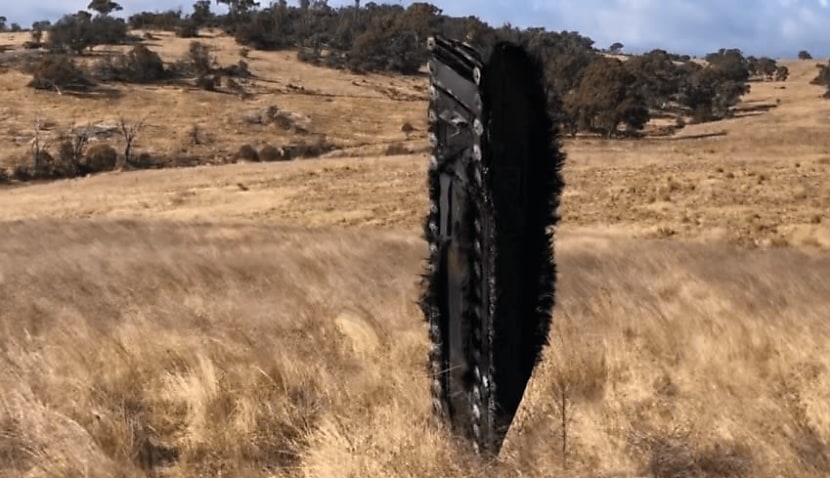
What is space debris?
According to NASA, space debris is a term used to describe any kind of debris orbiting Earth. This definition includes natural meteoroid debris and artificial orbital debris produced by humans. Nasa classifies this second category of “orbital debris” as any non-functional human-made object in orbit around the Earth. This human-made debris is often colloquially referred to as space junk. The terms space debris and space junk are commonly used interchangeably despite NASA’s classification.
This human-made debris consists of parts of rockets, abandoned satellites, spacecraft that no longer function, and small pieces of debris that have resulted from accidents, explosions or fragmentation of spacecraft. Most of this debris sits in orbit around Earth, with the European Space Agency (ESA) estimating in their 2022 Space Environment Report that there are currently 30,000 pieces of debris larger than 10 centimetres in space recorded and currently tracked. Modelling suggests there may be up to 670,00 pieces of debris over one centimetre and 1.7 million pieces over one millimetre.
Space debris returning to Earth
While the majority of space debris remains in orbit, portions of it will inevitably return to Earth. Whether it was a space launch vehicle designed to fall back to Earth, or a piece of debris that finally succumbed to orbital decay, the debris must contend with the atmosphere as gravity pulls it back to Earth.
The vast majority of objects that re-enter Earth’s atmosphere burn up during their re-entry, harmlessly disintegrating to nothing. The smaller an object, the more likely it is that it will break apart during re-entry. Larger objects, like rocket bodies, fuel fuselages or satellites, have a significantly higher chance of making it through the atmosphere relatively intact.
The danger these larger objects pose to those on the ground has been recognised by those launching the objects and planned accordingly.
Most space debris that re-enter Earth’s orbit has a planned debris footprint. This means that the trajectory of the debris that will fall back to Earth has been accounted for in advance, usually landing harmlessly in the ocean far away from human settlement.
The most common landing area for space debris re-entering the atmosphere is an area known officially as the South Pacific Ocean Uninhabited Zone and unofficially as the “spacecraft cemetery". The area is 4,000 kilometres off the Eastern Coast of New Zealand, about three kilometres deep and is home to over 260 separate pieces of space debris that have fallen in the area since 1971.
Some space objects are carefully designed with materials to ensure that they burn up and disintegrate entirely during re-entry. The China Manned Space Agency claimed that this was the reason they were letting their Long March 5B rocket re-enter the atmosphere uncontrolled and without a planned debris footprint.
The threat posed by space debris
The problem posed by space debris is two-dimensional. First, there is the obvious threat of space debris heading towards Earth and striking people or property. The second issue arising from space debris is the danger it poses while still in orbit to spacecraft, satellites and even astronauts.
Perhaps surprisingly, the risk to humans posed by falling space debris is very low, generally estimated to be about a 1-in-10,000 chance. This risk is rising, however, with a recent study by Canadian researchers determining that space debris has a 10 per cent chance of causing casualties by striking a person or property in the next 10 years.
The more immediate problem with space debris is its effects on our local space environment. With so much debris orbiting the planet, the risk of a piece of debris colliding with a spacecraft is significant. With space debris travelling at speeds over 25,000kph, even small objects can have catastrophic effects on spacecraft.
The debris also poses a severe danger to astronauts, particularly when they are engaging in delicate extravehicular activity (EVA) manoeuvres. If even a one-centimetre large piece of debris struck an astronaut, the effect would be similar to a bullet, except that it is moving nearly eight times faster and would compromise the pressurised space suit.
Researchers warn that the increasing amounts of space debris may impact our ability to access space at all, with clouds of orbital debris making launching sensitive equipment a nearly impossible task. The ESA warned that our current behaviour in space is unsustainable.
What can be done about space debris?
The field of space law is an emerging sector of international law designed to create a set of regulations that encourage sustainable practices in space.
There are currently five international legal instruments directly relating to space, as well as several guidelines and multinational efforts to create legal and ethical standards for the use of space.
The most widely supported of these instruments is the Outer Space Treaty, created in 1967 and ratified by 105 nations.
The UN has a dedicated Office for Outer Space Affairs. In 2010, this office released the Space Debris Mitigation Guidelines.
NASA also created the Artemis Accords in 2020, based upon the principles of the Outer Space Treaty and designed to create a peaceful and sustainable environment for space exploration and use.
As of July 2022, 21 nations have signed the Artemis Accords.

Liam McAneny
Liam McAneny is a journalist who has written and edited for his University International Relations journal. He graduated with a Bachelor of Arts (International Relations) and Bachelor of Laws from the University of Wollongong in 2021. He joined Momentum Media in 2022 and currently writes for SpaceConnect and Australian Aviation. Liam has a keen interest in geopolitics and international relations as well as astronomy.
Send Liam an email at: [email protected]
Receive the latest developments and updates on Australia’s space industry direct to your inbox. Subscribe today to Space Connect here.









